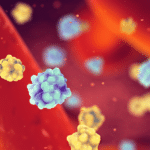In its ongoing search for alternatives to recreational cannabis, the National Institute on Drug Abuse (NIDA) has been funding research into much more dangerous and addictive drugs — ostensibly to help people ween off cannabis.
Undaunted by its lack of success thus far, NIDA supported a clinical trial which used nicotine, of all things, as a therapy for relatively mild cannabis withdrawal symptoms. Scientists at Southern Illinois University (SIU) gave 127 participants placebo and nicotine patches while they abstained from cannabis in a three-year-long project to assess whether nicotine could ease the symptoms of cannabis withdrawal.
When chronic users cease to consume cannabis, they may experience a week or two of minor withdrawal symptoms – including irritability, anxiety, nausea, and poor sleep. But does it make sense to treat these transitory symptoms with a highly addictive substance like nicotine? That seems rather extreme, even for the anti-marijuana knuckleheads at NIDA.
Smoking cigarettes, the primary form of nicotine consumption in the US, is the leading preventable cause of death, killing roughly 440,000 smokers and 40,000 nonsmokers (via secondhand smoke) each year. It is bizarre and entirely unacceptable that NIDA would promote nicotine addiction, even in the form of a nicotine patch, as an alternative to cannabis. Even the most problematic cannabis use pales in comparison to the public health crisis created by nicotine addiction.
Patch v. Placebo
So how did the clinical trial go?
Not as NIDA hoped. More people who received a placebo patch abstained from cannabis than those who got the nicotine patch, although the $300 incentive for staying cannabis-free was enough to persuade all but a few participants to give it a go.
Like other anti-cannabis studies, abstinence was not used as a measure of success. Instead, the SIU researchers used a proxy measure, “negative affect” — could nicotine satiate one’s cannabis cravings and make cannabis abstainers feel better?
Ironically, the authors highlight that the nicotine patch “in fact increased nausea, which in turn increased total [Marijuana Withdrawal Questionnaire] score at several points in time.” Other research has inadvertently found that alcohol dependence is better correlated with so-called cannabis withdrawal syndrome than cannabis use.
If other drugs, such as alcohol and nicotine, are the primary cause of cannabis withdrawal symptoms, then perhaps researchers have gotten it wrong. Many of these symptoms (restlessness nights, irritability) merely indicate someone’s discomfort. Yet they are presented as major harms caused by an enigmatic cannabis withdrawal syndrome.
A Million Dollar Dud
In the end, the nicotine patch wasn’t worthwhile. “The treatment main effect [on negative affect] across all points in time was not significant,” the researchers concluded. Additionally, the “treatment was not associated with [cannabis] craving symptoms overall across the 15 days of abstinence.”
In other words, nicotine didn’t help with cannabis cravings or mood overall, and it caused withdrawal symptoms on its own. But when the researchers analyzed each day separately, they sometimes saw beneficial effects from nicotine treatment. As is common in research, the authors failed to correct for multiple comparisons,1 which greatly inflates the false positive rate and makes findings such as these unreliable.
Perhaps these unimpressive results are why it took five years to write and submit a paper after the data was uploaded to the clinical trial registry in 2015.
Thankfully, the researchers acknowledge that their study “was not designed with the expectation that the methods we used would be used in normal clinical practice.”
Which begs the question: Then what were they hoping to prove by conducting this nicotine-for-cannabis clinical trial? And why in the world did NIDA squander over one million dollars2 — $1,033,051 to be exact — to fund it?
Adrian Devitt-Lee is a research scientist and longtime Project CBD contributor. © Copyright, Project CBD. May not be reprinted without permission.
Footnotes
- “Multiple comparisons” is the practice of slicing up data and running a flurry of statistical tests on the subsets. By running more and more tests, the chance that at least one of them is a false positive becomes much greater. See https://towardsdatascience.com/the-multiple-comparisons-problem-e5573e8b…
- Project ID DA031006
Recommended Readings
Cannabinoids for Cannabis Use Disorder?
Scientists often interpret research to suit funding goals. Why is that problematic?
Pharmaceuticals for Cannabis Addiction?
Many drugs have been proposed to treat cannabis addiction, from pure THC or CBD, to Ambien.
CBD in Addiction Treatment
A new review sheds light on addiction and the mechanisms by which CBD can limit addictive behaviors










